-
Posts
312 -
Joined
-
Last visited
Content Type
Forums
Detector Prospector Home
Detector Database
Downloads
Posts posted by RONS DETECTORS MINELAB
-
-
9 hours ago, phrunt said:
yup, 8" X-coil, 835 grams of raw small gold horse power! And that includes the skid plate.
The downside is you need an adapter, not easy to come by in the USA so likely not an option for you.
That looks like it would be very light, it's sad that is not an easy option here in the U.S...
That's got to make the GPZ-7000 close to the GPX-6000 with the 14" DD in weight comparison.
9 hours ago, Gold Catcher said:I would not recommend it. The skid plate of the NF12 will not add much to the weight but will protect the coil. I would not swing a USD 1200 coil without skid plate
UPC tape has been my preferred option to the skid plate to protect that investment.
8 hours ago, jrbeatty said:Never used skid plates.
Epoxy resin "Hardfacing" far lighter and costs considerably less-
Yep, that is the best way to go on heavy detectors.
Looks like 5.8 pounds is probably the lightest this detector can become minus X-coils.
I'm going to try to come up with some other mods as I really like the 7000 at 5.8 pounds, but would prefer a little less burden on my body.
-
I'm trying to lighten up the GPZ 7000 by using the lighter CTX 3030 LI-ION battery and using the 12 Z-search coil without skid plate. Looking like around 5.8 pounds so far, not to bad compare to the stock configuration. Has anyone found any other ways to lighten this detector through aftermarket shafts or modifications?
-
On 12/2/2022 at 9:14 PM, phrunt said:
This line from the Manticore manual suggests it's probably not much different, "Goldfield Mode is suited to finding smaller
surface gold nuggets (and some larger deeper ones) in mineralised ground."phrunt,
Thanks for pointing this out.
I.'m hoping the Manticore can hit on a .5 grain nugget or smaller filling in the gap of PI's, if so then I will be down to one VLF prospecting detector only, also like all it's other other capabilities which is a huge plus this detector offers. Never thought that would be an option, If only someday I could own one VLF and one PI.
It also looks promising that they added the Goldfield option on the Manticore and the 5.5x8 coil. I am familiar with the Vanquish 5.5x8 inch coil and feel its size would suffice my needs for nugget snipping in tight areas.
-
Steve,
Here's the full toolkit.
Four pages altogether.
-
4 hours ago, phrunt said:
To me it looked like he didn't even balance out the hot rocks, he balanced the ground and with it in fixed ground balance then went over the hot rocks. I'm not sure why he didn't try do the ground balance over the ground and the troublesome hot rock to see if it would balance out.
This video has a different perspective on the Axiom's hot rock capabilities.
I know the SDC-2300 can hit certain shaped nuggets at .05 gram and the ATX can hit gold at .1 gram both on more difficult ground conditions, but I have had some really flattened nuggets in these weights ranges that will not hit on a PI due to there thinness, simply add more roundness and no problems hearing these targets. I'm glad that Garrett has a lightweight land package to replace the ATX Military package, just wish the price was closer to the SDC's.
-
1/1/23 Important note from Steve H: Chris made this video before the Axiom was finalized using a prototype detector. The sensitivity was significantly boosted in the shipping version of the detector. As far as hot rocks Chris also did not make use of the hot rock rejection window on the Axiom as shipped in the final version.
Garrett Axiom and the SDC-2300 side by side, very interesting.
-
14 hours ago, Dutchman4 said:
So can someone "summarize" the GPX6000/Part 2 video results for me regarding when to use the Difficult vs Normal modes?
Do I have it right to just run in Difficult mode all the time for best results in all soils or only when working in heavy mineralized soils and hot rocks?
I usually try to run the GPX 6000 as sensitive as I can even putting up with some localized ground noise. I then go to difficult when the ground noise starts to create enough excess sound to mask small targets. Everyone's ground conditions vary, so I recommend experimenting with what's working best in your conditions with a small test target.
When running in difficult or normal timings and I get a signal, I switch the timings button to check if there is a significant change in target volume. If so, then I usually suspect it's a hot rock or just excessive ground noise.
I really like how the GPX 6000 can give a repeatable and recognizable sound on boot tacks and most whole square nails, these sounds differ from good non-ferrous targets. So, In old 1800's hydraulic pits where the majority of the rubbish you find is nails and boot tacks, I now can patch hunt more effectively and avoid digging all these non desirable targets until I find a productive area and need to dig this kind of rubbish in order to unmask good targets.
I also like the Coiltek 9" coil and it's smaller size, it seems to handle the hot ground fairly well in my serpentine areas.
-
Part 1
My first attempt of a video, please excuse the sound on part 2, not sure why its cutting out.
These examples are for the hottest ground. The Equinox works great at target separation in low mineralized ground.
-
-
25 minutes ago, GotAU? said:
Looks ready to go! Did you cover the entire bottom of the coil cover with pipe tape as well?
Yes, the tape is on the bottom of the coil too. Seems to quite the rock scrapes quite a bit.
-
1 hour ago, jasong said:
Is there by chance a chart someone has made somewhere listing the weight of the various Coiltek and the stock 11" weights?
Jasong,
This chart has a good comparison chart and has weights! I've found it to be pretty accurate in testing the coils. Have not got the NF coils yet though. To clarify, small gold represents more sensitivity to shallow small targets and big gold is for larger targets at depth
-
-
Wow, the video sure does a good job showing the smooth enjoyable stable threshold sound of this detector. Reminds me of the smooth GPX 5000 threshold but with gold sizes more like the SDC's capabilities. If the Axiom is also able to handle the hottest ground, then this is also a super bonus to open up a lot of new areas that had to be ignored before.
Great job Garrett, looking forward to getting these in stock even more now.
Thanks also Steve and Gerry for all your hard work helping Garrett make this happen.
-
On 7/25/2022 at 1:07 PM, Bishop said:
anyone else wear there coil cover out yet?
I have over a thousand hours detecting with the GPX 6000 using UPC 2 inch 10mil pipe wrap on the still original skid plate. I removed some of the tape to show in the picture that the coil is barely even scratched. This tape suppresses the scratching noises quite well and adds very little weight to the coil. This tape is extremely scratch resistant and has great stretch ability without leaving much sticky tape residue. Patching edges does occur but is Infrequent as I only need to add tape to the skid plate edges after a lot of coil bumping. I can also remove the skid plate for stream detecting by removing the outer tape wrap and skid plate since I have also taped the coil itself and use it this way in the water to avoid the cork effect...
The second and third picture illustrates how pulling lightly to the pipe wrap allows it to mold itself to uneven 90 degree coil angles without any creases or wrinkles to the tape.
-
On 8/5/2022 at 10:45 PM, GotAU? said:
Ron, this looks like a very good idea, thanks for sharing it. Curious- how well is the mono working out for you in streams, particularly in black sand deposits?
I have been able to work somewhat successfully in heavy mineralized stream beds here with the mono coil using the difficult timing. There are certain serpentine and granite type bedrock types here that are not workable at all with the stock 11" coil. Fortunately these hotter bedrock areas are only about 25% of the areas I detect so I just bypass them. I have not had any issues detecting with the mono on the sandbars here, but the stream sandbars here are not heavily enriched with black sands. I have not tried this GPX 6000 on the Oregon coast yet where the gold bearing black sands are in thick layers such as Gold Beach.
-
I have been detecting with the GPX 6000 and other model detectors in creeks and rivers during the hotter summer months. The air pocket under the GPX 6000 skid plate is quite large and makes the coil act like a floating cork. The best solution I found was removing the skid plate and using UPC 2 inch 10mil. pipe wrap on the actual coil thus removing the air pocket when under water. Please see pictures! This tape is extremely scratch resistant and has great stretch ability without leaving much sticky tape residue. I have over a thousand hours detecting with the GPX 6000 using this tape without any damage to the coil. I infrequently only need to add tape to the bottom edges after a lot of coil bumping. The skid plate also fits back over the taped coil edge for when you go back to dry land detecting.
I have also used a small amount of this tape to the inside of the battery compartment to tighten the loose seating of the battery. This also has prevented the exclamation warning screen from occurring when the detector is bumped hard enough or dropped. If the exclamation warning is frequent then please send it in to the repair center to be fixed correctly.
Also note the accessory armrest covers in the picture. These are item # 3011-0144 Armrest Wear Kit, GPX/Sov/Eureka.-- very comfortable on the GPX 6000.
Take a kid detecting.
Ron
-
Chris Ralph does a good job explaining this topic well.
Remember: The Fisher F19 is a Gold Bug Pro including some added options for even a lesser price and can come stock with the smaller 6 x 10 inch coil.
-
For those of you who plan on retiring and moving to your dream nugget detecting areas can start the research on where to go when you get there.
Some of the best resources for this is the USGS Bulletins and Professional Papers from the early 1900's to present. For many years I would spend the winter days at BSU's library in Boise, Idaho. They have a complete run of the USGS reports describing the majority of the US mining districts in great detail. UNR in Reno, also host a great research library. This information I learned was so intriguing that I later became a rare book dealer for mining and geology book. Raymond Rossiter published some books in the 1870's called Mineral Resources West of the Rocky Mountains. His description of the mining conditions out west is very informative. Also my favorite writer Waldemar Lindgren wrote many mining district reports that are extremely detailed.
This is a great hobby, so please enjoy the adventures and take a kid detecting.
-
Lots of people are selling their older model detectors for the newer models coming out. I guess it’s like having packrat syndrome, must have the shiny and new. This opens up a good opportunity to get some good detector prices for people on a budget.
As a dealer and trainer I get asked a very good question by a lot of customers on what prospecting detector would be best for them. My answer is usually what is your price range and how mineralized is the area you planning on prospecting. If they are new to prospecting and not sure where to even go, I recommend them doing some research on the mining districts closest to them. This is best done by using the online USGS publications site or state geology sites and then by using the MLRS site to see if there is any non-claimed federal ground open to them for prospecting (U.S.A. specific). My usual recommendation for their best chance of finding nuggets is to get a PI detector when in medium to heavy mineralized ground or a VLF with a very good target VDI for low mineralized ground in rubbish littered areas. Usually the PI detectors exceeds there price limit. There are options for used PI detectors at VLF pricing, but this comes with risk by not having any warranty. I recommend only keeping a detector that’s under warranty due to the high price of repairs, but do understand there are some really good prices on used detectors also, such as the GPX-5000.
The following list is just a recommendation from my experience using a majority of these detectors on what will work for nugget hunting. I am not saying price always determines the best performance due to many variables in metal detecting. This is not a debate on detector performances as it is more about what price to expect to pay to get into this hobby. All the VLF’s listed here can or should pass the bic pen sensitivity test. There are many more comparable models out there, but these were probably some of the best priced prospecting detectors I have found for the money.
Detectors for light mineralization where a VLF can work well:
$279,00 Minelab Vanquish 440 w 7 x 10 inch coil Multi Freq. 3 year warranty. lacks ground balance and threshold options. I recommend nugget hunting in Jewelry mode for best sensitivity. Also a multi-purpose detector.
$375.00 Fisher Gold Bug newer Digital w 5 inch coil 19Khz. 5 year warranty.
$449.00 Fisher F19 w 6 x 10 inch coil package. 19Khz 5 year warranty.
$635.00 Nokta/Makro Legend w 6 inch coil package Multi Freq. 3 year warranty. Also a multi-purpose detector.
$636.00 Nokta/Makro Gold Kruzer w 4 x 7.5 and 5.5 x 10 inch coil package 61Khz. 3 year warranty.
$679 Garrett 24K w 6 x 10 inch coil 48Khz. 2 year warranty.
$749.00 Fisher Gold Bug 2 analog or digital w 3 x 6.5 inch coil 71Khz. 5 year warranty. This detector is probably a specialty detector with the most sensitivity for cleaning up the smallest leftover nuggets. If you need more sensitivity then the GB2 then probably recommend the Gold Falcon MD20 pin-pointer 300Khz.
$1,078.00 Minelab Equinox 800 w 6 inch coil Multi Freq. 3 year warranty. Also a multi-purpose detector. Very versatile.
Many other used VLF models can come in well under $500.00, but with no warranty probably better to buy a new model for the price difference.
For medium to heavy mineralization, a PI is really necessary to have the best success: Weight is usually the downside to PI detectors until the last few new releases. So weight is included on the PI list.
$2,379.00 Garrett ATX w 11 x 13 inch mono coil Pulse. 2 year warranty. Great price. Weight 5.5 Lbs.
$3,399.00 Minelab SDC 2300 w 8 inch mono coil Pulse. 3 year warranty. Weight 5.1 Lbs. The timings with the small 8” coil seems to handle mineralization pretty well. Very small gold capabilities. Has slight warble in threshold.
$3,995.00 Garrett Axiom w 7 x 11 inch mono and 11 x 13 inch DD coils Pulse. 2 year warranty. Lowest Weight w 11 inch mono 4.25 Lbs. Great price. Waiting to hear more on the possible heavy mineralization capabilities being talked about. Very small gold capabilities.
$3,999.00 Minelab GPX 5000 w 11 inch DD & 12 x 15 inch mono coils Pulse. 3 year warranty. Weight on arm minus battery pack 5.3 Lbs. with 11” coil. To be wireless you need Docs Gold Screamer pack adding some more weight. Good price. Lots to offer for coil sizes & coil configurations.
$5,999.00 Minelab GPX 6000 w 11 inch mono & 14 inch DD coils Pulse. 3 year warranty. Weight 4.52 Lbs. w 11 inch mono. Very small gold capabilities. Has unstable warble in threshold using 11 inch mono coils. Headphones do help this situation.
Used older Whites and Fisher PI detectors seem to hold a high value, so I usually stay away from paying a premium for them.
A used GP 3500 can be found for less than $1,400, ATX for less than $1,500, GPX 4500 for less than $1,700, and GPX 5000 for less than $2,000. Most likely non warranty, but these older PI’s were built pretty solid.
Heavy mineralization:
$8,499.00 Minelab GPZ 7000 w 14 inch DOD coil ZVT. 3 year warranty. Weight 7.3 Lbs. NF 12 inch coil is preferred or if not worried about losing warranty then x-coils. Very small gold capabilities.
Maybe Phrunt, JP, or others can describe the best options in NZ & AUS.
-
13 minutes ago, mn90403 said:
How waterproof is it? I don't remember or didn't see what it had to say.
And why do they call it Market Scale?
Here the link for the Axiom including the owners manual:
https://garrett.com/sport/axiom
Waterproof coils and rain resistant control box
4.7 pounds with stock coil
-
Bishop,
Detecting is fine, but having a house and a pension will allow you to be able to go detecting anytime you want to. Prescott was high on my list for a great place, so the Bradshaw's sound like a dream location for beeping. Chris Gholson is also a great resource there. Lots of the northern states mentioned previously would be ideal for your RV during the late spring through early fall seasons.
Deathray,
Yes, Calaveras is a very nice place. Hopefully you can beach hunt in Florida with your detectors.
Jasong,
I'm hoping you can go camping at some of these places since your not able to move. I know of a man who goes to Mexico and detects there, last time though he was warned that the locals are getting too dangerous to be around in these mining areas. Grants Pass is a great place and is pretty close to where I live during the winter. The Klamath Mountains are full of areas to go detecting and the seasons here are fairly mild. I have not been to Durango but was considering Salida a little farther to the northwest. This town is at the foothills of the Rocky's, but has very mild weather condition in comparison to the high country. Leadville is north of Salida and is a great place for detecting.
Gold Catcher,
Plumas is one of those areas that we hope never gets to crowded, seems like the winters there prevent most people from moving there, so far it's still a great place for detecting. The Feather River is one of my favorite rivers. Plumas in the summer and southeastern California for the winter, not a bad idea. Not sure which town to live in as I-10 is kind of a remote area near the mining districts you mentioned. North of there is Bishop, I looked into buying real estate there years ago but there was a housing shortage and prices were too high.
Luckylundy,
The eastern Sierra's are a spectacular, but can be a cold place to live. I could imagine that at 5100' you have a very cold winter there. At least you can access a lot of historic mining camps in the high Sierra's and head out to northern Nevada since you are fairly close to both places.
Geof_junk,
I agree: Retire as soon as possible and try to keep a good home for yourself. Thanks for reminding me to try to get as much time enjoying our hobbies before age and health problems set in. Also, thanks for explaining the harsh, dangerous, and difficult conditions you have to overcome there to go detecting.
I did a lot of traveling over the years to many historical mining towns. Some of my favorites were:
Oregon-- Baker City area, John Day area, Sumpter, and Jacksonville area, Grants Pass area, and Durkee area.
New Mexico -- Magdalina, Hillsburo, and Silver City.
California -- Downieville, Mariposa, Etna, Bishop, Yreka, Nevada City, Redding, Weaverville, Georgetown, Magalia, and French Gulch.
Nevada -- Winnemucca area, Virginia City, Dayton, Lovelock area, Hawthorne area, Beatty, Goldfield, Battle Mountain area, Austin, and Carson City area.
Idaho -- Idaho City, Elk City, Silver City, Atlanta, and Warrens.
Arizona -- Wickenburg area, Kingman area, and Prescott area, and Sedona.
Alaska -- Fairbanks area and Chicken area.
Montana -- Lewistown
Colorado -- Georgetown
-
Retirement is probably a non-realistic option for most, in reality it's more like work till you die. But for those of you that can move to your dream prospecting area, where would you consider moving too??? I used to live hours away from my nearest mining camps which were located in Eastern Oregon and Southern Idaho, I was able to plan a few trips during the six months that they had road access due to the winter snows, in the end I realized Montana/Colorado/Northeastern Oregon/Alaska/Idaho/Wyoming/High Sierra's were probably not a good place to retire and be able to get out very often detecting, duck hunting was maybe more fit for these locations. These area's do have very remote areas that are spectacular to explore during the fair weather months and have very little people to worry about running into.
I decided to try living in Winnemucca, Nevada which was probably a dream location for detecting especially in the late 90's. The changes that happened there were the big mining companies open pit mined a lot of the historical mining areas and the easy road access allowed the rest of the mining camps to get flogged with prospecting detectors.
So Arizona has the opposite affect of the northern states, December is wonderful, but the summer heat is brutal, thankfully its not for six months and you can hunt in the mornings. This area has a mix of remote places and some flogged areas nearer to the snow bird camping areas. Definitely a place to consider for retirement detecting.
California, hmm!!! why would you move to California, is this not the place where you make your fortune and leave as soon as possible? The southern area is surely overcrowded and has mostly private lands. The Motherload's Sierra foothills have a pretty good year around climate ideal for detecting, a lot less people to contend with and a huge amount of mining districts. The downside is lots of private ownership until you get farther into the higher Sierras', then your dealing with the winter snows as mentioned before.
Northern California??? So far this place has a little of everything desirable for a retired detectorist. Lots of mining history, lots of open public lands, considerably less population, year round outdoor weather conditions (close by mountains for in the summer and the valley for when it's colder outside. Remember colder in the northern Sacramento valley is 40 degrees, not even cold if you have lived up north.
I took a trip to southern New Mexico and went to Silver City and some other historical mining districts there, absolutely a beautiful place to explore. It also includes a lot of the qualities of northern California.
I have not been to NZ, WA or other places like that. Maybe someone from there could better describe the places they have found there dream detecting place. Or maybe they do not want to attract attention to it, which makes good sense to keep it a secret.
-
2 hours ago, afreakofnature said:
If you ever had Covid and still had to work with it or its after effects, the QA/QC will not be there. I can only imagine now that this is the case for many things that were produced over the last couple years and will continue. I finally got Covid this past week and if this is mild Covid I can not imagine what it was like before. I can tell you for certain that if I was in a factory with this I would not give 2 shits what comes out and would just want to lay down and rest my body and brain. The brain fog is terrible and the forgetfulness is disturbing, let alone the other flu/cold like symptoms.
I sorry you got the crummy cron, hopefully you do not get the two month cough. I got it two months ago and even a week after being not contagious I still could only detect about a quarter of the time due to fatigue.
Hope you have a speedy recovery and can swing again soon.
-
2 hours ago, Steve Herschbach said:
The AQ and Impulse Gold have no discrimination at all in the classic sense. The AQ is using manipulation of the ground balance via presets to achieve a pseudo discrimination function. In other words, they are using the ground balance to discriminate instead of ground balance, leaving the machine out of balance in many situations.
The inability to adjust the ground balance on the AQ makes it non-functional in some ground. For gold prospecting, the ground balance must revert to its intended use, and so there would be no discrimination per se. However, the Gold version would be able to get similar results by purposefully offsetting/misadjusting the ground balance. All in all it is very similar to how people were getting discriminations results with the TDI, and from my use the Impulse feels like nothing more than a finely tuned high power TDI. Whether that is technically correct or not…. that is how it acts and feels. Once you understand this, then all questions about discrimination etc. can be understood.
Steve,
Great explanation of why this would be a dig all PI in order to not lose the PI depth advantage over a VLF, we can still look forward to a lighter land package and hopefully a price tag that will meet the market for people wanting to get there first PI experience on a budget.

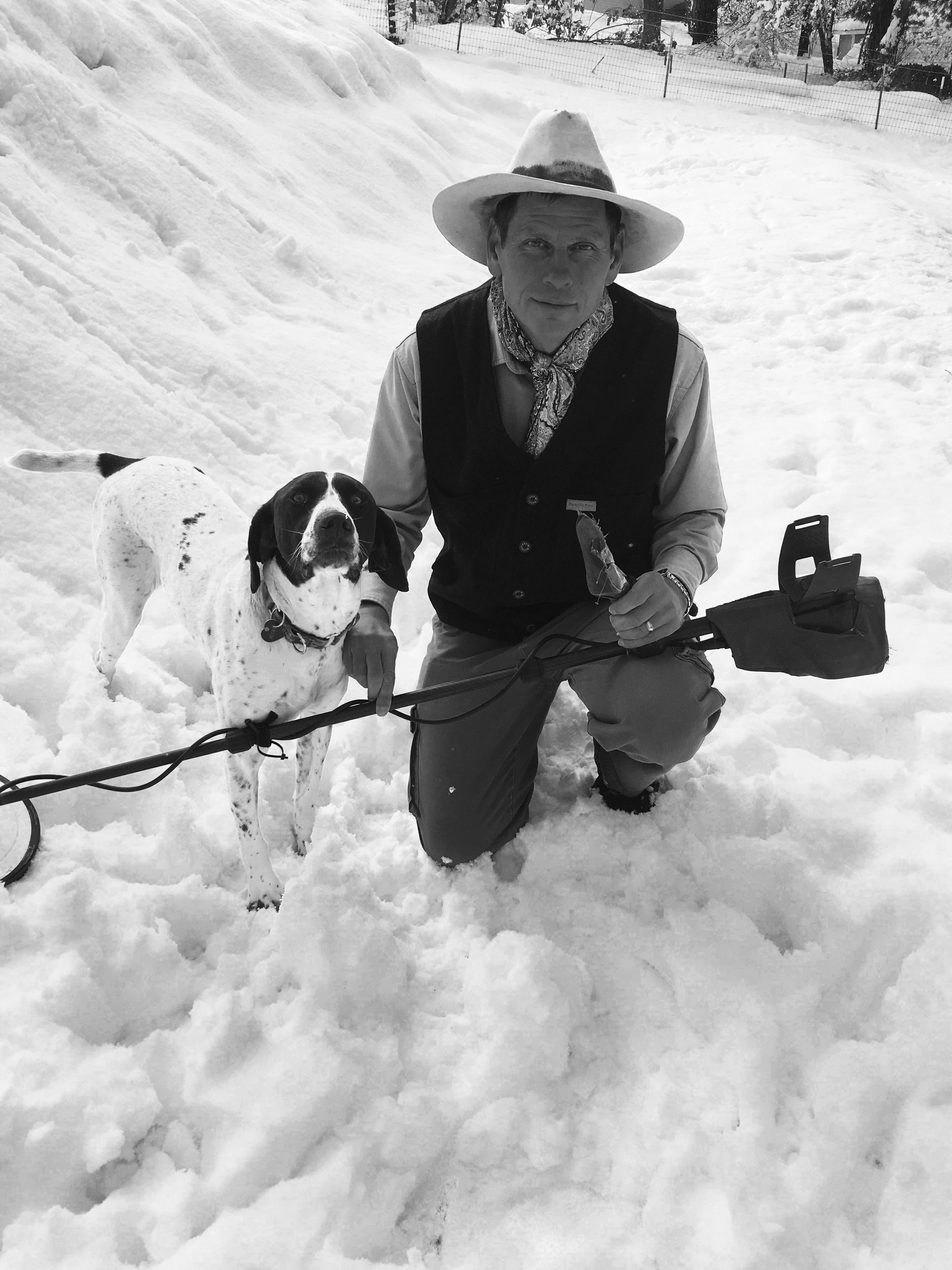
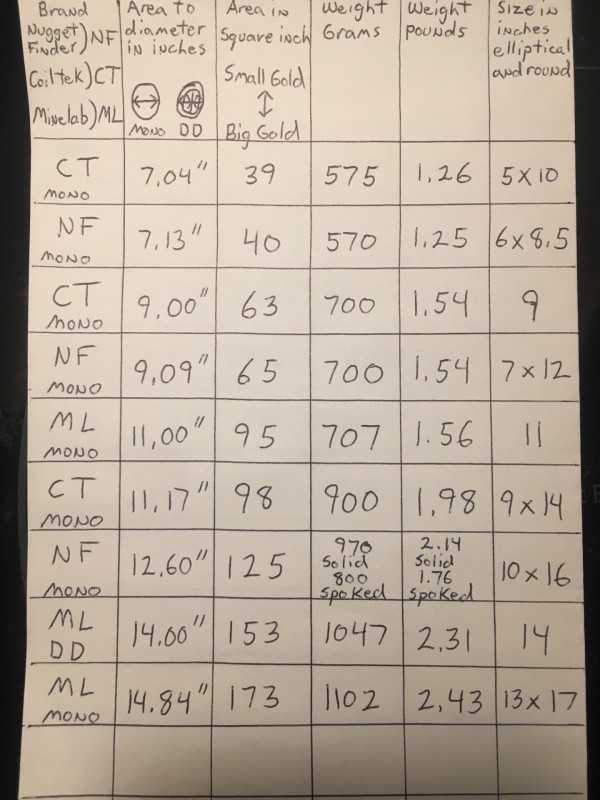
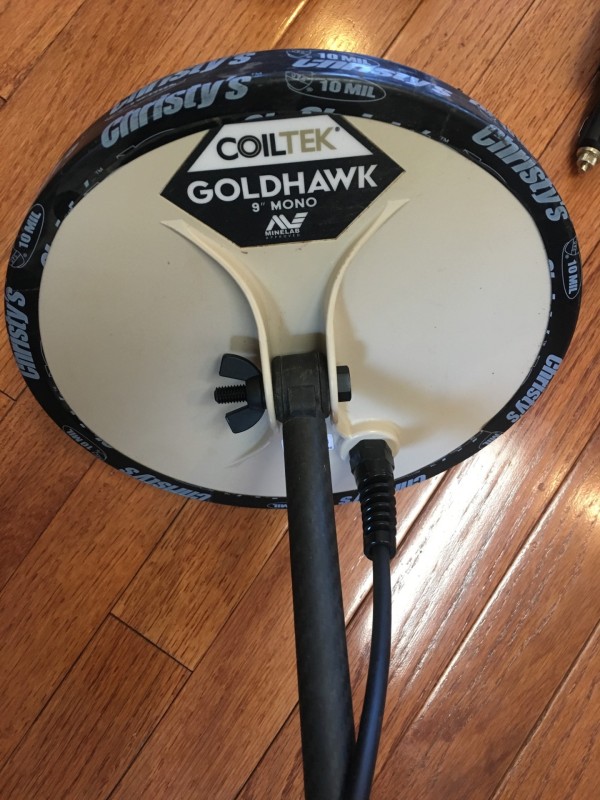
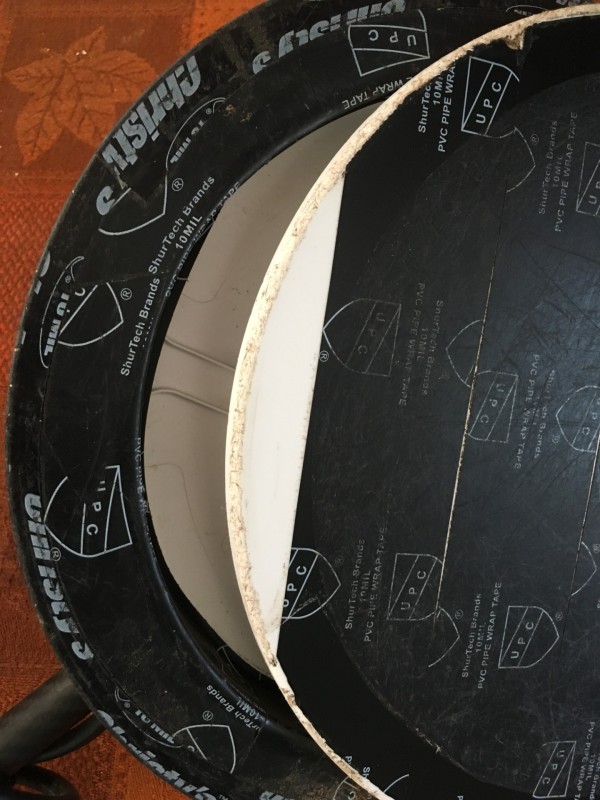
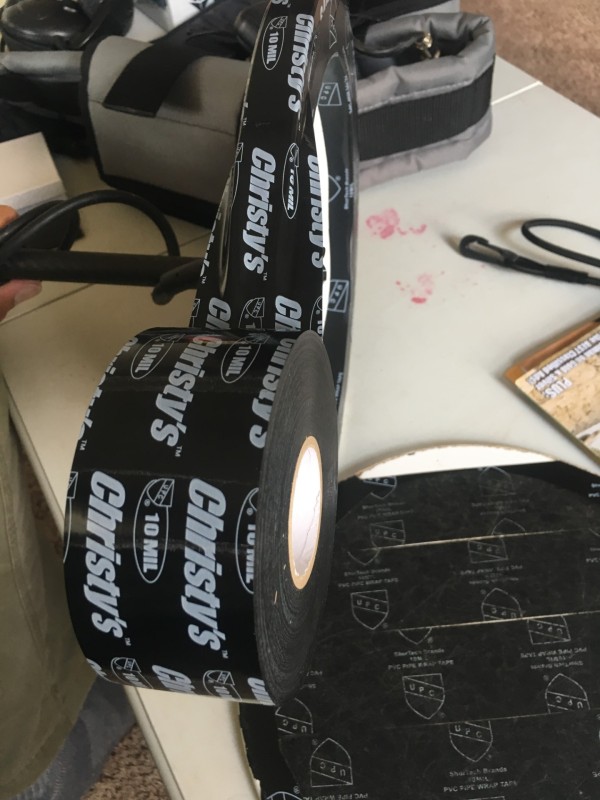
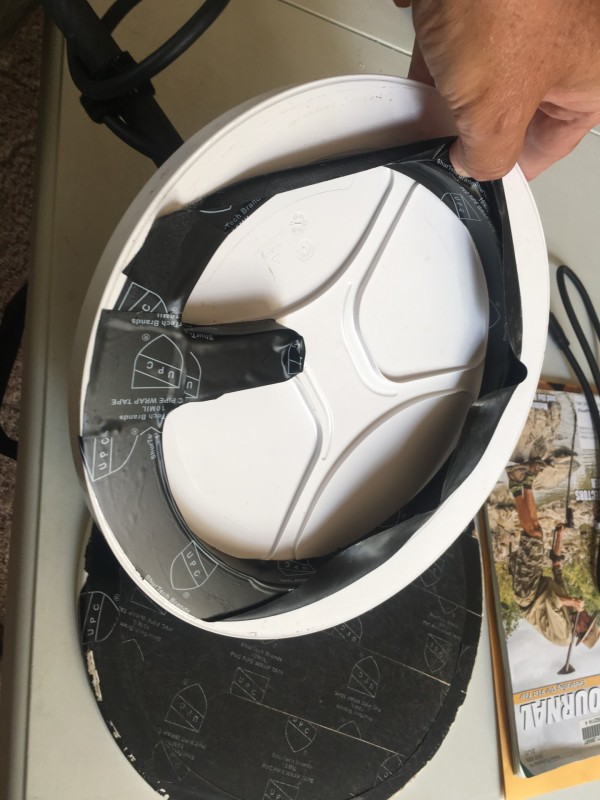
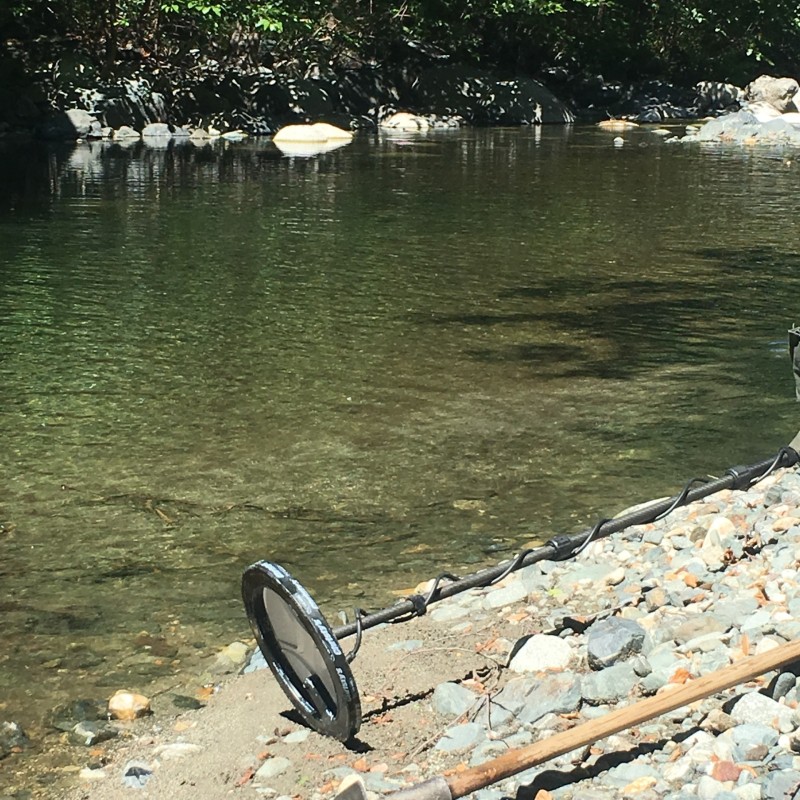
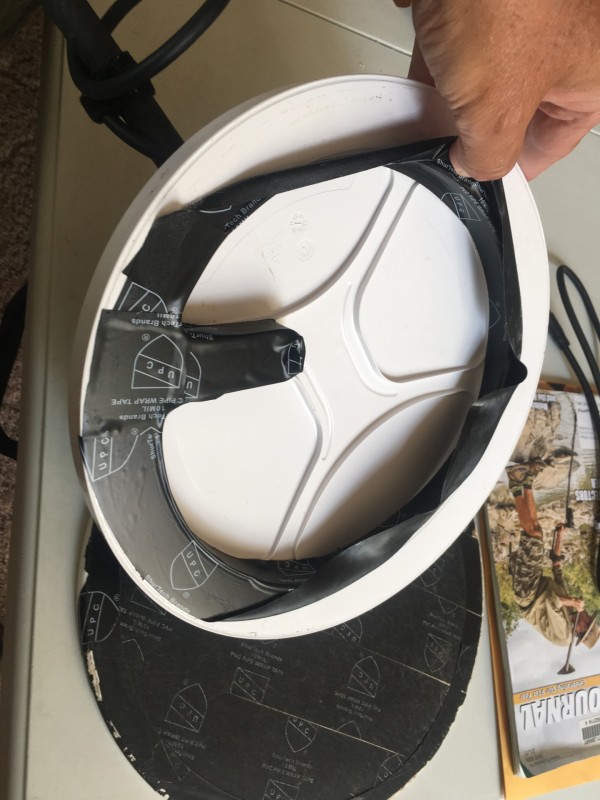
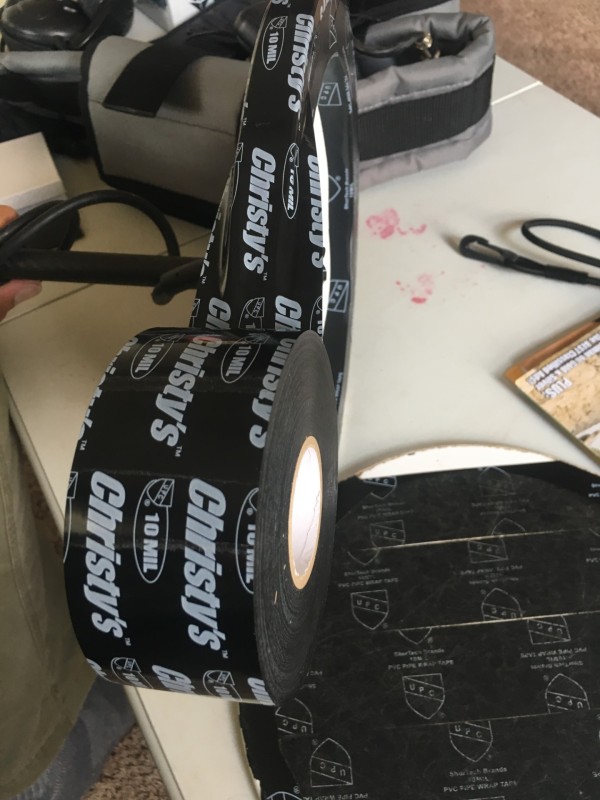
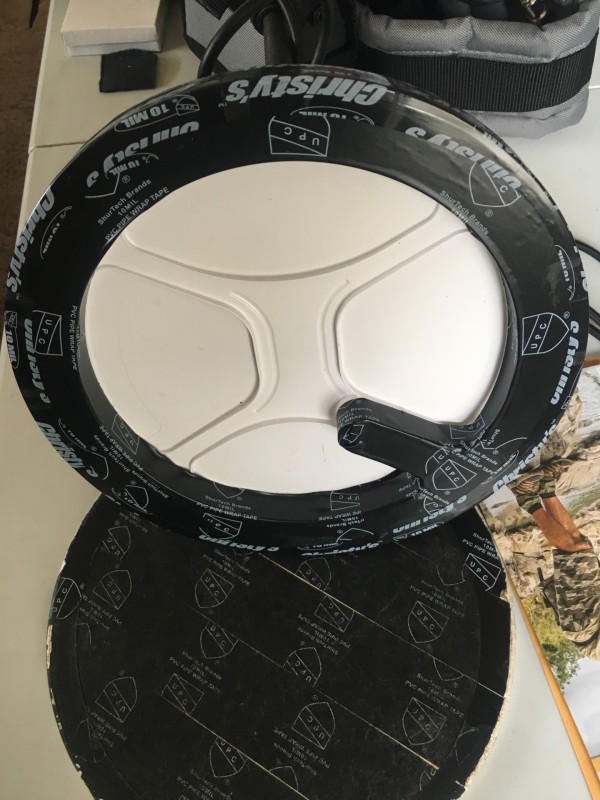
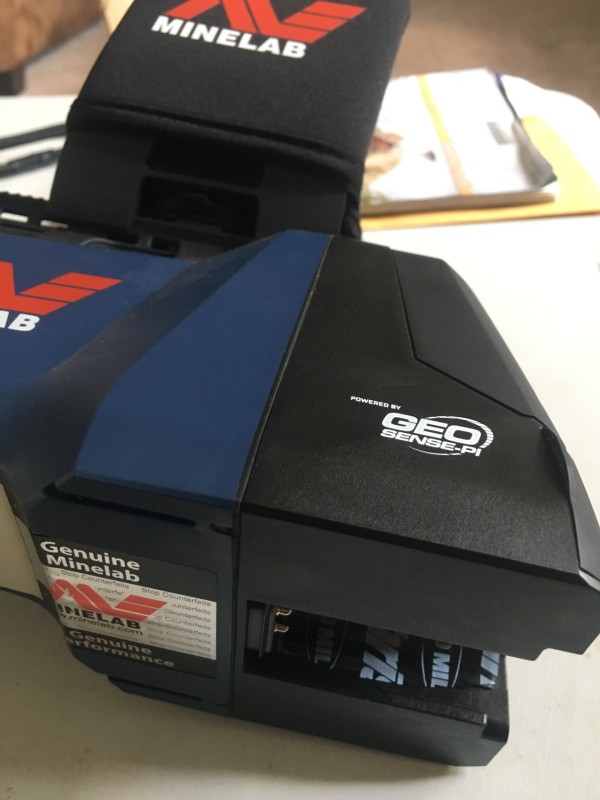
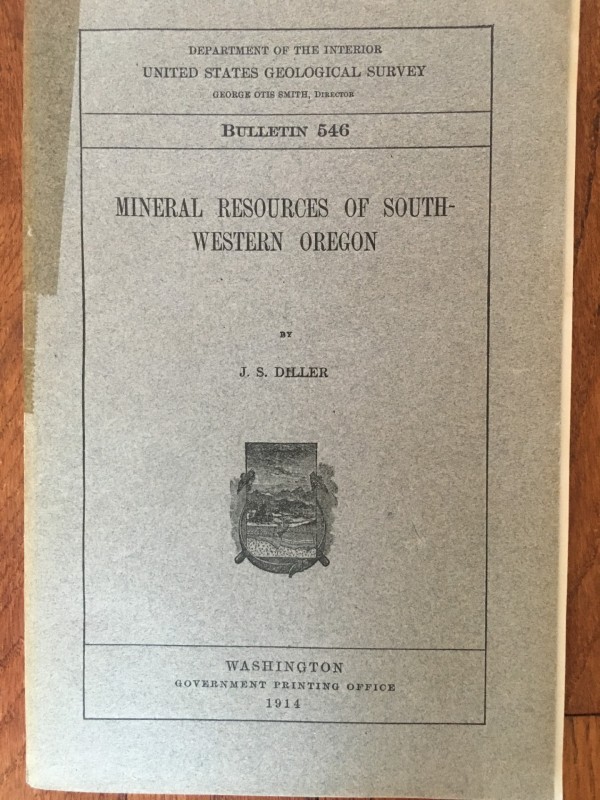
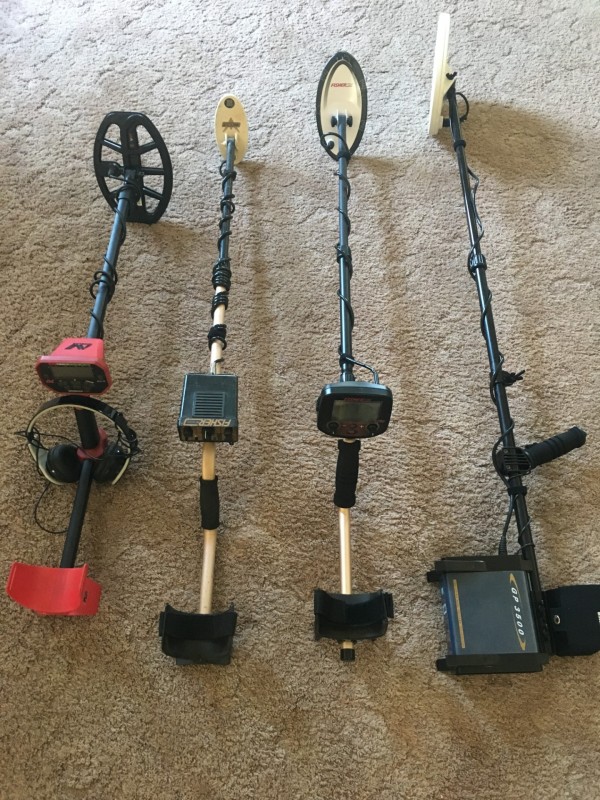
GPZ 7000 Weight Question
in Minelab Metal Detectors
Posted
I'm hoping Minelab has this in the works for us and they will call it the GPZ Featherweight with 50% more power to the coil.